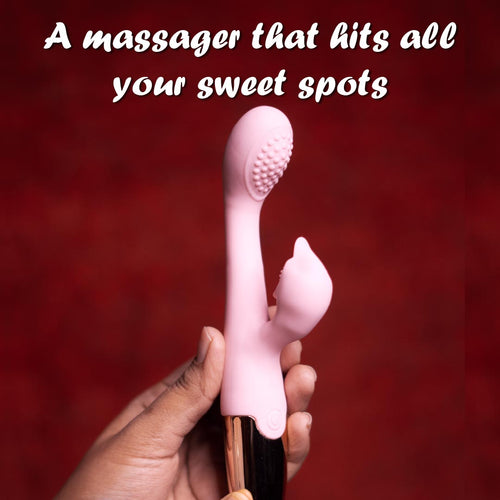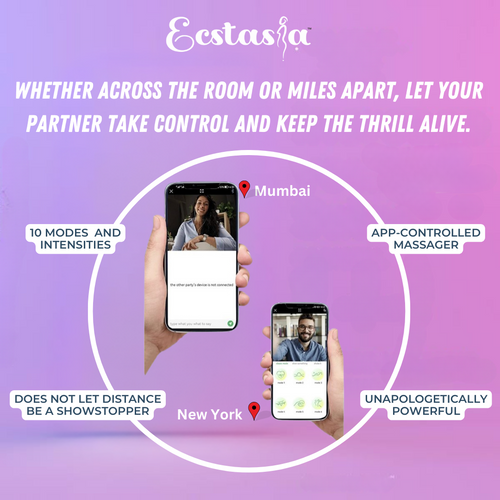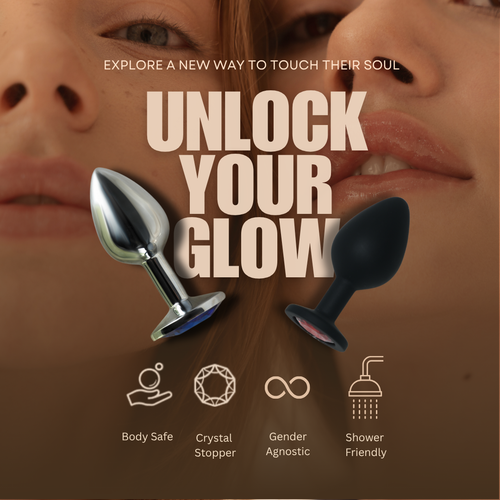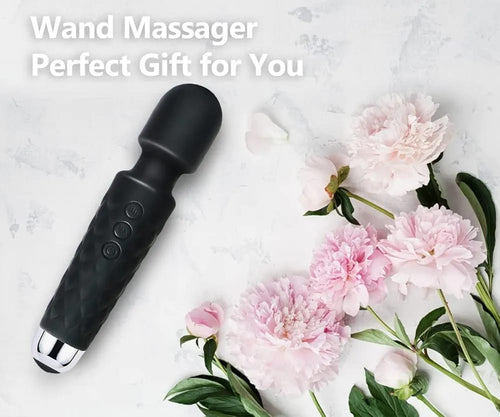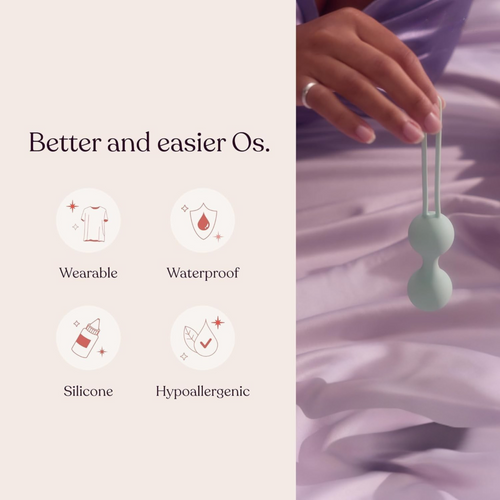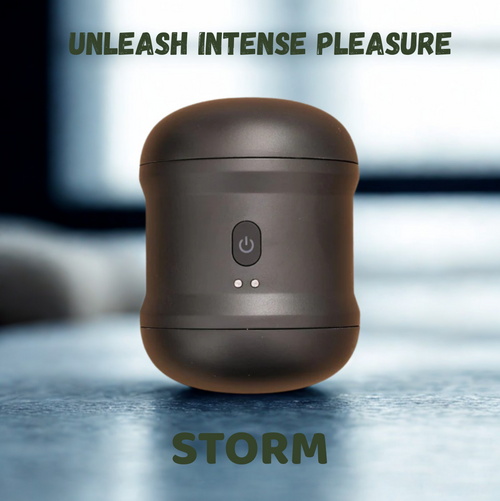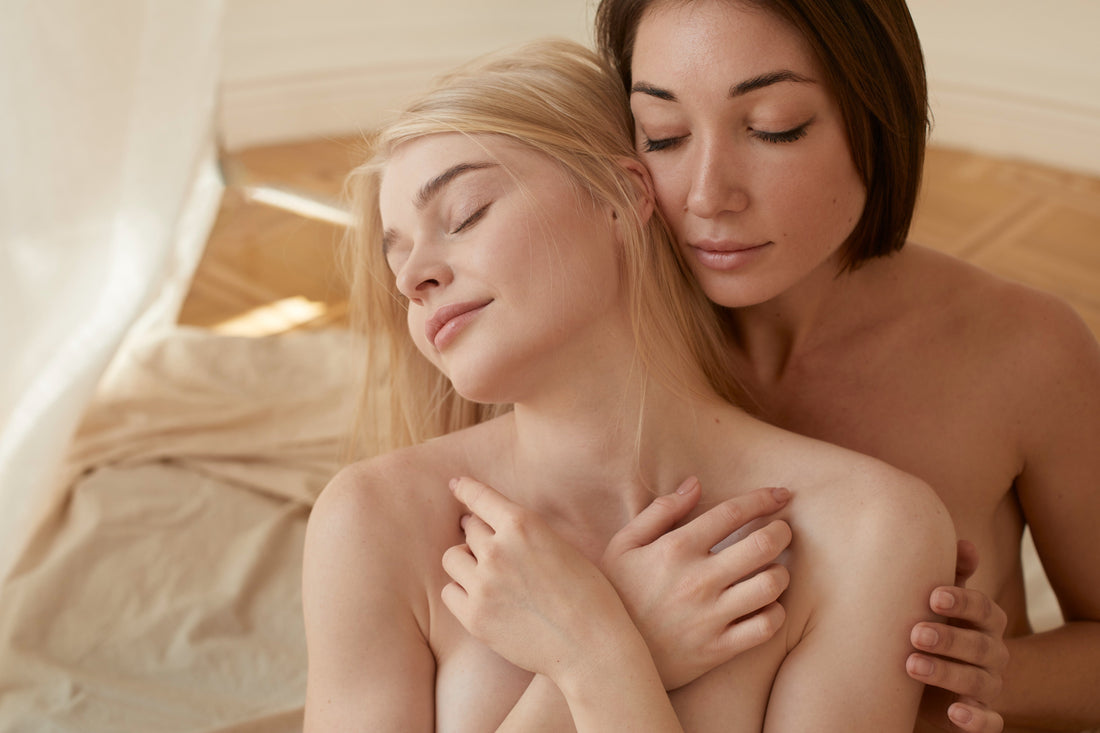
How to Explore Your Body with Confidence ?
Ever had that moment when you caught a glimpse of yourself in the mirror and didn't quite know how to feel? You're not alone. Sexual self-exploration is natural, but for many of us, it comes with a side of awkwardness and uncertainty.
Think about it: we spend our entire lives in these bodies, yet most of us know shockingly little about what actually feels good. The journey to sexual wellness isn't taught in most classrooms—we're left figuring it out through whispered conversations and late-night internet searches.
But here's the truth: understanding your own body is the foundation of a fulfilling sex life, whether solo or with partners. It's about connection, not performance.
Ready to ditch the shame and embrace curiosity instead? Let's talk about how exploring your body can transform not just your bedroom experiences, but your relationship with yourself.
Understanding Your Body's Unique Landscape
A. Embracing Your Natural Form
Ever noticed how we're quick to criticize parts of our bodies? We're so used to seeing "perfect" bodies online that we forget something crucial: there's no such thing as perfect.
Your body is uniquely yours. Those curves, those angles, those little quirks – they're all part of what makes you, well, you.
Think about it this way: would you judge a close friend's body with the same harsh lens you use on yourself? Probably not.
Start with a simple exercise: stand in front of a mirror and find five things you like about your body. Maybe it's your strong legs, your expressive eyes, or even just the way your hands move. Build from there.
B. Identifying Personal Pleasure Zones
Here's the truth most sex education skips: pleasure isn't one-size-fits-all.
Your erogenous zones are as unique as your fingerprints. What sends shivers down your spine might do absolutely nothing for someone else.
Exploration is the name of the game. Take time to touch different parts of your body – not just the obvious spots. Notice what feels good. The nape of your neck? The inside of your wrists? The small of your back?
Many people discover their most sensitive areas through unhurried self-touch with no goal beyond curiosity. No rush, no pressure – just discovery.
C. Breaking Through Myths and Misconceptions
You've heard them all. Women don't enjoy sex as much as men. Size is everything. Good sex always leads to orgasm.
Pure nonsense.
These myths aren't just wrong – they're harmful roadblocks to genuine pleasure and connection. They create expectations that nobody's actual experience can match.
Real bodies don't perform like porn stars. Real pleasure doesn't follow a script. And real connection happens when you stop trying to match some imaginary standard.
The next time you catch yourself believing a sexual "should," ask yourself: Who benefits from me believing this? Usually, not you.
D. The Mind-Body Connection in Sexual Exploration
Your biggest sexual organ? It's not what you think – it's your brain.
When your mind is racing with work stress, family drama, or that embarrassing thing you said three years ago, your body can't fully engage. That disconnect blocks pleasure faster than anything physical.
Try this: before any sexual exploration, take five deep breaths. Feel your feet on the floor. Notice sensations in your body without judging them.
This mindfulness creates a bridge between your thoughts and physical sensations. When they're working together, that's when magic happens.
Remember, sexual pleasure isn't just about technique – it's about presence. Being fully in your body, accepting what you feel, moment by moment.
Creating a Safe Space for Self-Discovery
Setting the Mood for Personal Exploration
Your environment shapes your experience. Think about it - you wouldn't try to meditate in a noisy club, right? Same goes for exploring your body.
Dim lighting works wonders. Not pitch black (you want to see what you're doing), but soft enough to feel comfortable. Candles are perfect for this - they create that gentle glow that makes everything feel a bit more special.
Temperature matters too. Being too cold makes you tense up, while being too warm might make you sleepy. Find that sweet spot where you're completely comfortable in your skin.
Music can set the tone. Choose something that makes you feel good - whether that's chill lo-fi beats or whatever gets you in a relaxed headspace.
Essential Privacy Considerations
Nothing kills the mood faster than worrying about interruptions. Lock your door. Seriously. This isn't something you want roommates, family members, or kids barging in on.
Consider your living situation. If you share walls with others, maybe use some background music to create sound privacy.
Your phone? Put it on "do not disturb" or better yet, leave it in another room. Those notifications can wait.
Choosing Comfortable Times for Exploration
Rushing self-discovery defeats the purpose. Pick times when you're not expected anywhere soon. Maybe it's early morning before everyone's awake, or that perfect window when the house is empty.
Pay attention to your natural rhythms. Some people feel more in tune with their bodies in the morning, others at night. There's no universal "best time" - just your best time.
Weekends often offer those longer stretches of uninterrupted time that weekdays don't. Block out "me time" in your calendar if needed - this is self-care, after all.
Techniques for Mindful Self-Exploration
A. Starting with Gentle Touch and Sensation
Look, exploring your body isn't a race. It's about connection, not completion. Start by simply touching your skin with curiosity rather than judgment. Run your fingers across your arms, belly, thighs—everywhere—and just notice how different areas feel.
Some spots might be ticklish, others sensitive, some might barely register sensation at all. That's all normal and actually pretty fascinating when you think about it.
Try using different pressures and textures: maybe the back of your hand feels completely different from your fingertips. Maybe a feather or soft fabric creates sensations you've never noticed before.
The point isn't to get anywhere specific—it's to pay attention. When you find places that feel good, stay there for a bit. No rush.
B. Using Mirrors for Visual Understanding
Grab a mirror. A full-length one if you have it, a hand mirror works too.
Most of us have complicated relationships with mirrors. We use them to criticize ourselves daily. But try something different—look at your body with curiosity instead of critique.
What if you viewed yourself like a landscape? Notice the curves, the colors, the unique marks that tell your story. Those stretch marks? They're literally your growth showing on your skin. That birthmark? Nobody else has one exactly like it.
Try different angles, different lighting. Morning light versus evening light changes everything you see. This isn't about finding flaws—it's about seeing yourself completely, maybe for the first time.
C. Incorporating Breathing Techniques
Your breath is the ultimate tool for staying present during self-exploration. When you notice yourself getting distracted or judgmental, come back to your breathing.
Try this: inhale slowly through your nose for four counts, hold for two, exhale for six. This immediately calms your nervous system and brings you back to the moment.
While exploring sensitive areas, you might notice you hold your breath without realizing it. That tension blocks sensation. Instead, try breathing deeply into areas of your body as you touch them. Send your breath to your fingertips, your chest, your pelvis.
The connection between breath and pleasure is ancient knowledge. The deeper and more relaxed your breathing, the more sensation you can experience.
D. Progressive Exploration Methods
The best explorations happen in layers, not all at once. Start with clothed touch, then gradually remove layers when you feel comfortable. There's no timeline here except your own.
Try the "mapping" approach: divide your body into sections (upper, middle, lower or left side, right side) and dedicate time to each area before moving on. This prevents rushing and helps you discover unexpected sensitive zones.
Temperature can transform sensation completely. Try touching yourself after holding an ice cube, or after warming your hands under hot water. The contrast can highlight sensations you might otherwise miss.
Remember to explore non-genital erogenous zones too: the nape of your neck, inner wrists, behind your knees—these places can hold surprising sensitivity.
E. Journaling Your Discoveries
Keep notes on what you discover—seriously. Our bodies change constantly, and what feels good today might feel different tomorrow.
Write down not just what you did, but how it made you feel emotionally too. Were you surprised? Uncomfortable? Delighted? All of these reactions give you information.
Some questions worth exploring in your journal:
-
What three places on my body surprised me today?
-
What sensations do I want to explore more deeply?
-
How did my mood affect what felt good?
-
What stories or judgments came up during exploration?
Your journal becomes a personalized pleasure map that evolves as you do. It's also a powerful reminder that you're allowed to know your own body intimately—something many of us weren't taught growing up.
Communicating Your Discoveries with Partners
Building Confidence to Express Needs
Sharing what feels good in bed isn't always easy. The words get stuck in your throat. Your cheeks burn hot. But here's the truth: nobody can read your mind.
Start small. Practice saying what you like when you're alone. Literally talk to your mirror: "I love when you touch me here" or "Slower feels amazing." Sounds silly? Maybe. But it works.
Try texting your desires first if saying them out loud feels too much. Something like: "Been thinking about when you did that thing last time... more of that please."
Remember that confidence comes from knowing what you want. And you've been doing the work to figure that out.
Demonstration Techniques for Mutual Understanding
Show, don't just tell. Take your partner's hand and guide it. Move together. Use sounds that signal "yes, that" without needing to break the mood with a full sentence.
Try the sandwich method: praise, suggestion, praise. "That feels amazing. Could you go a little slower? You're so good at this."
Visual aids aren't just for classrooms. Share articles, videos, or illustrations that demonstrate what you're curious about. Say "This caught my attention" rather than "You should do this to me."
Creating a Judgment-Free Dialogue
The second you mock or criticize someone's sexual preferences, walls go up. Game over.
Create a code word that means "not working for me" without sounding like rejection. Something neutral like "reset" or "adjust" keeps things positive.
Ask open questions: "What would feel good right now?" instead of "Do you like this?" One invites exploration; the other just gets a yes/no.
Schedule actual check-ins outside the bedroom. Over coffee, ask: "What's been your favorite thing lately?" This conversation builds intimacy that makes bedroom talk much easier.
Overcoming Barriers to Self-Exploration
A. Addressing Shame and Cultural Taboos
We've all been there – that moment when exploring your own body feels somehow wrong. But here's the truth: self-exploration is natural and healthy.
The shame many of us feel comes from somewhere specific – family attitudes, religious teachings, or cultural messages that labeled sexuality as dirty or inappropriate. Breaking free starts with recognizing these messages for what they are: outdated ideas, not facts.
Try this: when shame creeps in, ask yourself, "Who taught me to feel this way? Is this actually true?" Simply questioning these beliefs weakens their grip.
Replace those negative thoughts with empowering ones. Remind yourself: "My body belongs to me," "Curiosity about my body is healthy," and "Understanding myself better is a form of self-care."
B. Working Through Past Negative Experiences
Past trauma or negative experiences can make self-exploration feel scary or triggering. Take things at your own pace – there's no rush.
Start with baby steps. Maybe just being comfortable in your own skin is the first goal. Or perhaps setting boundaries around your exploration – deciding when, where, and how you feel safest.
Journaling can help process difficult emotions that come up. Write about your feelings without judgment, tracking your progress over time.
C. Seeking Professional Support When Needed
Sometimes we need backup. A sex-positive therapist can provide personalized guidance that generic advice can't match.
Look for professionals with experience in sexual health, trauma, or body image. Organizations like AASECT (American Association of Sexuality Educators, Counselors and Therapists) can help you find qualified experts.
Support groups offer community with others facing similar challenges. Hearing others' journeys can normalize your experience and provide practical strategies.
D. Celebrating Small Steps Forward
Growth happens in tiny moments, not giant leaps. Did you read an article about self-exploration without closing the tab? Victory! Did you look at yourself in the mirror for five seconds longer than usual? Amazing progress!
Keep a "wins journal" to document these moments. On tough days, flip through it to remind yourself how far you've come.
Remember that progress isn't linear. Some days will feel easier than others, and that's completely normal. The key is persistence, not perfection.
Conclusion
Exploring your body with confidence is a journey of self-discovery that empowers you to understand your unique desires and needs. By creating a safe space, practicing mindful techniques, and overcoming personal barriers, you develop a deeper connection with yourself that enhances both solo experiences and partnerships. Remember that communication about your discoveries with partners builds intimacy and creates more fulfilling sexual experiences.
Your body is your own personal landscape waiting to be explored. Take your time, be patient with yourself, and embrace the process without judgment. Whether you're just beginning this journey or continuing your exploration, the confidence you develop through understanding your body will transform your relationship with yourself and enhance your intimate connections with others.


